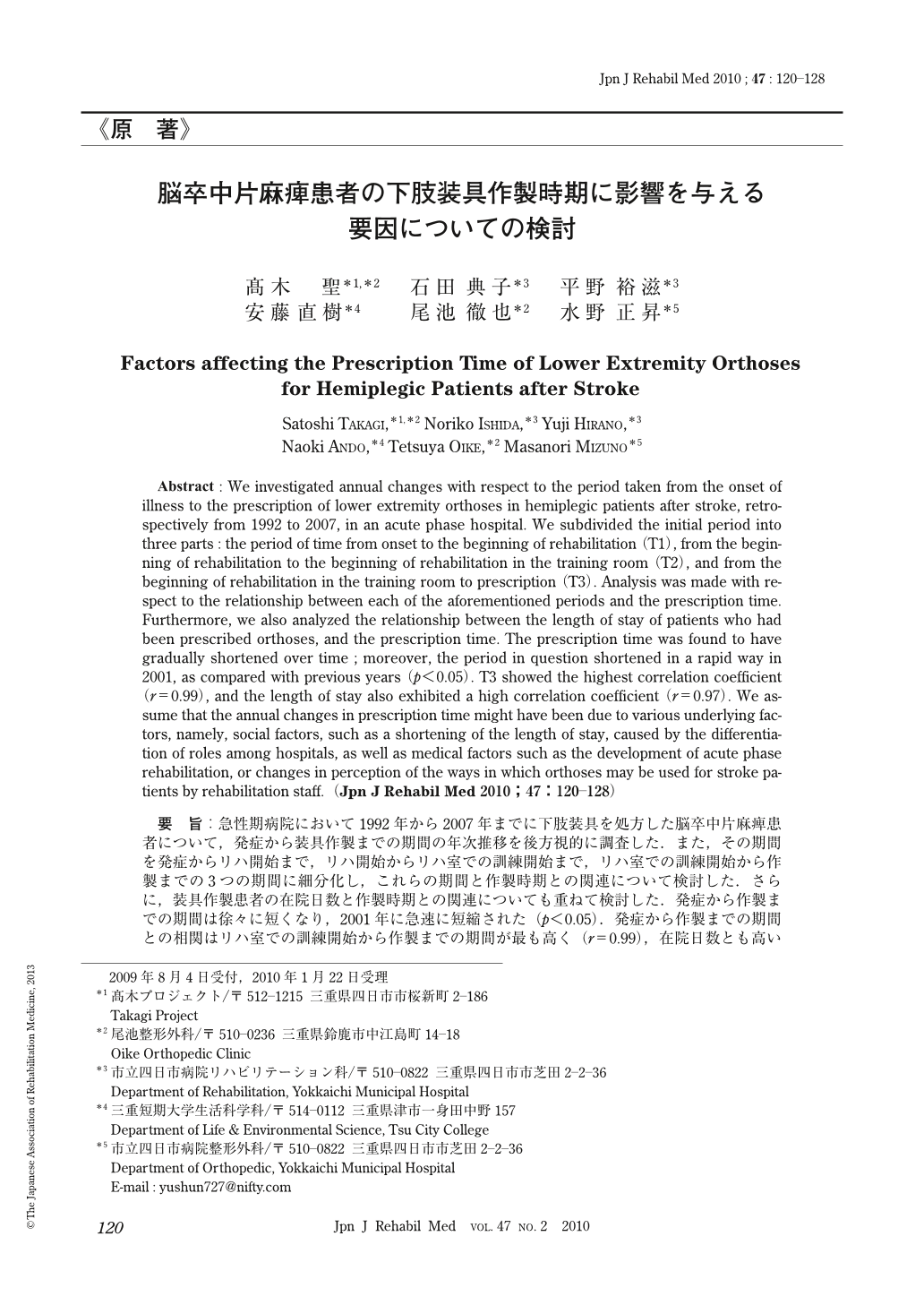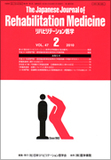Japanese
English
- 販売していません
- Abstract 文献概要
- 1ページ目 Look Inside
- 参考文献 Reference
要旨:急性期病院において1992年から2007年までに下肢装具を処方した脳卒中片麻痺患者について,発症から装具作製までの期間の年次推移を後方視的に調査した.また,その期間を発症からリハ開始まで,リハ開始からリハ室での訓練開始まで,リハ室での訓練開始から作製までの3つの期間に細分化し,これらの期間と作製時期との関連について検討した.さらに,装具作製患者の在院日数と作製時期との関連についても重ねて検討した.発症から作製までの期間は徐々に短くなり,2001年に急速に短縮された(p<0.05).発症から作製までの期間との相関はリハ室での訓練開始から作製までの期間が最も高く(r=0.99),在院日数とも高い相関を示した(r=0.97).装具作製時期がこのような年次推移を示した背景として,早期リハの進展や装具に対するリハスタッフの意識改革などの医学的要因とともに病院の機能分化による在院日数の短縮化などの社会的要因による影響が示唆された.
Abstract : We investigated annual changes with respect to the period taken from the onset of illness to the prescription of lower extremity orthoses in hemiplegic patients after stroke, retrospectively from 1992 to 2007, in an acute phase hospital. We subdivided the initial period into three parts : the period of time from onset to the beginning of rehabilitation (T1), from the beginning of rehabilitation to the beginning of rehabilitation in the training room (T2), and from the beginning of rehabilitation in the training room to prescription (T3). Analysis was made with respect to the relationship between each of the aforementioned periods and the prescription time. Furthermore, we also analyzed the relationship between the length of stay of patients who had been prescribed orthoses, and the prescription time. The prescription time was found to have gradually shortened over time ; moreover, the period in question shortened in a rapid way in 2001, as compared with previous years (p<0.05). T3 showed the highest correlation coefficient (r=0.99), and the length of stay also exhibited a high correlation coefficient (r=0.97). We assume that the annual changes in prescription time might have been due to various underlying factors, namely, social factors, such as a shortening of the length of stay, caused by the differentiation of roles among hospitals, as well as medical factors such as the development of acute phase rehabilitation, or changes in perception of the ways in which orthoses may be used for stroke patients by rehabilitation staff.

Copyright © 2010, The Japanese Association of Rehabilitation Medicine. All rights reserved.


